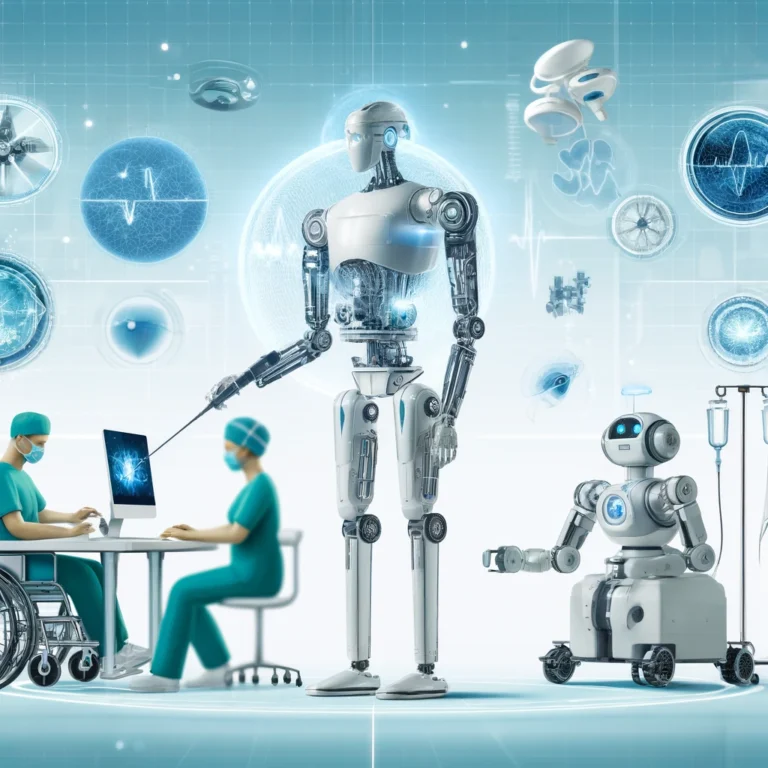The integration of robotics in healthcare is revolutionizing the industry, offering advancements that improve the precision, efficiency, and effectiveness of medical treatments. From surgical robots to rehabilitation devices, medical robotics are set to reshape the future of healthcare. This article explores the current state of medical robotics, their benefits, and the potential challenges they face.
Advancements in Medical Robotics
1. Robotic-Assisted Surgery
Robotic-assisted surgical systems, such as the Da Vinci Surgical System by Intuitive Surgical, have become prominent in the field. These systems allow surgeons to perform complex procedures with greater precision and control through minimally invasive techniques. Robotic arms, equipped with surgical instruments, are controlled by the surgeon from a console, enhancing dexterity and reducing the risk of complications.
2. Rehabilitation Robots
Rehabilitation robotics, including exoskeletons and robotic arms, aid patients recovering from injuries or surgeries. These devices assist in physical therapy by providing repetitive, precise movements that help improve motor functions. For example, the EksoNR exoskeleton by Ekso Bionics enables patients with spinal cord injuries to stand and walk, promoting muscle strength and mobility.
3. Diagnostic and Therapeutic Robots
Robots are also being used for diagnostic and therapeutic purposes. For instance, capsule robots developed for colonoscopies and biopsies can navigate the gastrointestinal tract to detect abnormalities and perform minimally invasive procedures. Additionally, robots like the XENEX disinfection system use UV light to sanitize hospital environments, reducing infection rates significantly.
4. Robotic Prosthetics
Robotic prosthetics are advancing rapidly, offering enhanced mobility and functionality to individuals with limb loss. These bionic limbs incorporate sensors and actuators that mimic natural movement, allowing users to perform daily activities with improved ease. Some prosthetics even provide sensory feedback, enabling users to “feel” through their artificial limbs.
Benefits of Medical Robotics
1. Increased Precision and Accuracy
Medical robots enhance the precision of surgical procedures, leading to better outcomes and fewer complications. The ability to perform minimally invasive surgeries reduces recovery times and minimizes scarring.
2. Enhanced Rehabilitation
Robotic-assisted rehabilitation offers consistent and precise therapy, crucial for effective recovery. Patients can benefit from intensive rehabilitation sessions that might be challenging to achieve manually.
3. Improved Patient Safety
By reducing the risk of human error and increasing the accuracy of procedures, medical robots improve patient safety. Automated systems can also handle repetitive tasks, freeing healthcare professionals to focus on more critical aspects of patient care.
4. Access to Remote Areas
Telemedicine and telesurgery facilitated by medical robots can provide access to specialized care in remote or underserved areas. Surgeons can perform procedures from afar, overcoming geographical barriers and expanding the reach of advanced medical treatments.
Challenges and Considerations
1. High Costs
The development and implementation of medical robotics are costly, which can limit their accessibility. High initial investments and maintenance costs may be a barrier for smaller healthcare facilities.
2. Training and Expertise
Healthcare professionals require extensive training to operate and maintain medical robots effectively. Ensuring that staff are adequately trained is essential for the safe and effective use of these technologies.
3. Ethical and Regulatory Issues
The integration of robotics in healthcare raises ethical and regulatory questions. Ensuring patient privacy, data security, and the ethical use of robotics is crucial. Regulatory bodies must establish guidelines to oversee the development and deployment of medical robots.
4. Technical Limitations
While medical robotics offer significant benefits, they are not without limitations. Technical issues, such as software malfunctions or mechanical failures, can pose risks. Continuous monitoring and advancements are needed to address these challenges.
Medical robotics represent a transformative advancement in healthcare, offering numerous benefits from enhanced precision in surgeries to improved rehabilitation outcomes. As technology continues to evolve, the integration of robotics in healthcare is expected to expand, bringing about more efficient, effective, and accessible medical treatments. Addressing the challenges of cost, training, and ethical considerations will be essential to fully realize the potential of medical robotics in transforming healthcare for the better.

